I am in the process of making a small sparkplug for a model internal combustion engine. It seems that Corian is the best material for the insulator, but I'm having a hard time finding Corian locally. Does anyone know of a different material than Corian that will work suitably? I need 1/4" diameter material, but if I can find it in scrap rectangular pieces I can turn it in the lathe. I can't find a source on the internet that sells Corian in 1/4" round sections or I would buy some on-line. any help would be appreciated.---Brian
You are using an out of date browser. It may not display this or other websites correctly.
You should upgrade or use an alternative browser.
You should upgrade or use an alternative browser.
Shop built sparkplugs for model engines
- Thread starter Brian Rupnow
- Start date

Help Support Home Model Engine Machinist Forum:
This site may earn a commission from merchant affiliate
links, including eBay, Amazon, and others.
- Joined
- Sep 2, 2011
- Messages
- 1,367
- Reaction score
- 362
some have used teflon instead. would that be an option?
Making mini sparkplugs. | Home Model Engine Machinist Forum
Making mini sparkplugs. | Home Model Engine Machinist Forum
- Joined
- Sep 2, 2011
- Messages
- 1,367
- Reaction score
- 362
and Ebay has several listings for Machinable Ceramic. a bit pricey for the rod version though. sheet versions not as bad
jkimberln
Well-Known Member
Corian is just a 70-80% mixture of Alumina and acrylic. For us, that is very fine alumina grinding compound and liquid acrylic (methyl methacrylate). In principle you could just mold your own insulators (and put in the center electrode). Liquid acrylic is available at most art supply stores. The alumina you might already have in the shop, at least, I do. The problem I see with this is making the mold and getting the mix to release from it once it gets hard. I don't know if you could machine it in a lathe since it is brittle, but others do it so I guess you could also. If you had the mix, you could pack a brass tube with the stuff, let it get semi hard, then just shove it out to make rods for machining later. Quite possibly, you could substitute any epoxy for the acrylic. JB Weld?
olympic
Well-Known Member
Okay, thanks for the offers. I just found a local cabinet making place about three miles from me. They gave me enough Corian to build about ten thousand sparkplugs.
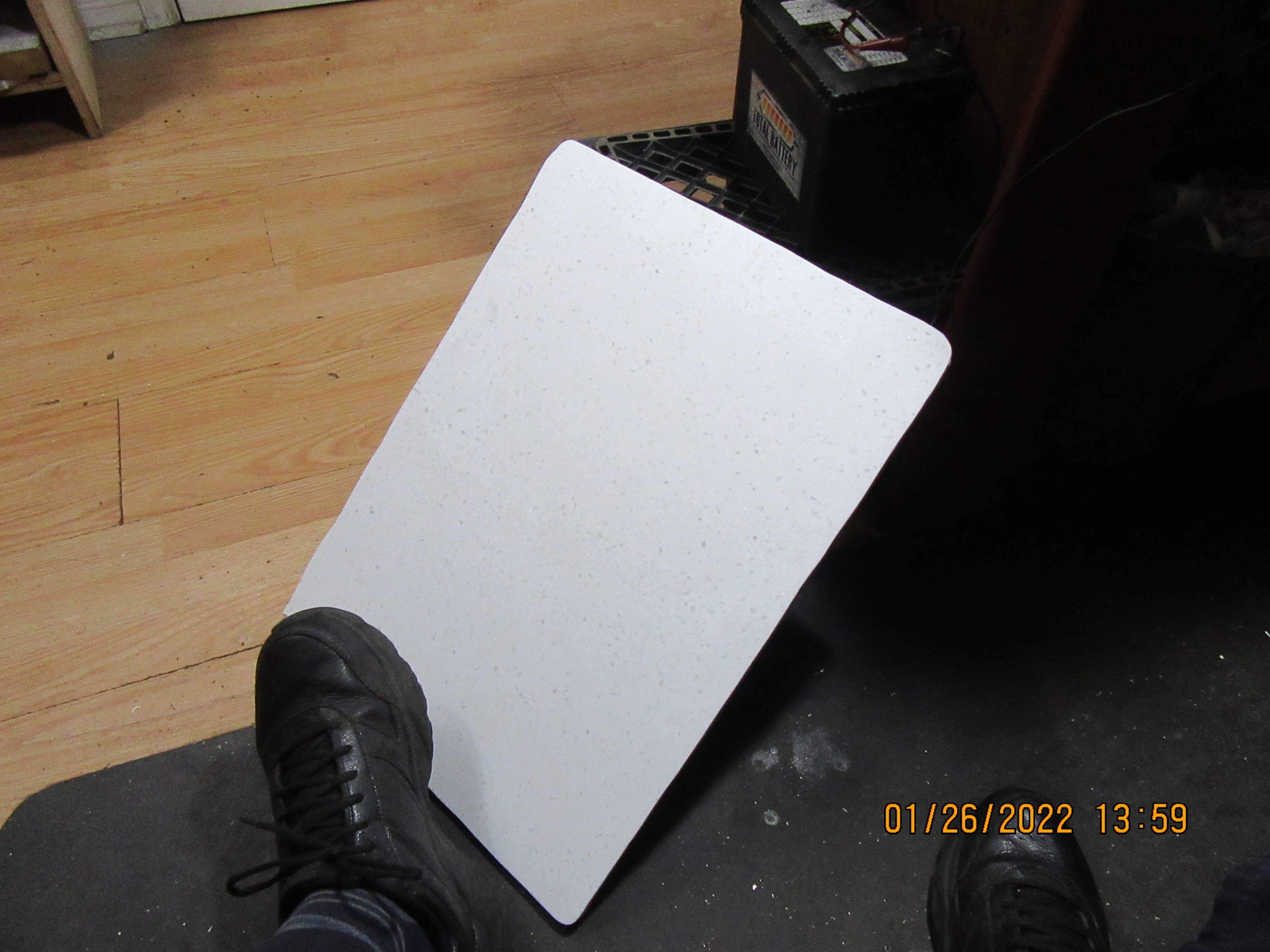

You won't find it in rounds as it is only made in sheets. Often sold in sticks for the pen turning hobby or offcuts from a company that fabricate worktops and countertops.
Thanks, but I'm good now. That piece I scored earlier today will last me till I die.
Harglo
Well-Known Member
BrainI am in the process of making a small sparkplug for a model internal combustion engine. It seems that Corian is the best material for the insulator, but I'm having a hard time finding Corian locally. Does anyone know of a different material than Corian that will work suitably? I need 1/4" diameter material, but if I can find it in scrap rectangular pieces I can turn it in the lathe. I can't find a source on the internet that sells Corian in 1/4" round sections or I would buy some on-line. any help would be appreciated.---Brian
Try a counter top shop for some corian. Teflon in a small OD an hole in the middle might compress an spread out some. Ive used some corian for these little plugs an have some crack donna no why unless the heat. There is machinable ceramic not sure if you have to harden it for plug use.
Harvey
Brian,
Corian is nice to work with and makes beautiful spark plugs. I found one limitation, though, through experience. I made some long-reach 10mm spark plugs for my Red Wing to reach through the casting well into the combustion chamber (see photo). I had a lot of carbon buildup on the plug in that engine in the past, so I made them "high heat," with a long, tapered insulator. (Sharp electrode: another story -- trying to make it run with a low-energy magneto). It did run, I'm happy to say, but I smelled burning plastic with the first puffs of exhaust, and by the end of 20 seconds, it quit. The tip insulator was burned completely away.
I have had much better luck with Corian in the combustion chamber with an ignitor for the same engine. This was in the very same combustion chamber, but the exposed portion was much smaller and close to metal for heat sinking. That ignitor has run for the full duration of at least 25 shows with no degradation whatsoever.
Regards,
Don
Corian is nice to work with and makes beautiful spark plugs. I found one limitation, though, through experience. I made some long-reach 10mm spark plugs for my Red Wing to reach through the casting well into the combustion chamber (see photo). I had a lot of carbon buildup on the plug in that engine in the past, so I made them "high heat," with a long, tapered insulator. (Sharp electrode: another story -- trying to make it run with a low-energy magneto). It did run, I'm happy to say, but I smelled burning plastic with the first puffs of exhaust, and by the end of 20 seconds, it quit. The tip insulator was burned completely away.
I have had much better luck with Corian in the combustion chamber with an ignitor for the same engine. This was in the very same combustion chamber, but the exposed portion was much smaller and close to metal for heat sinking. That ignitor has run for the full duration of at least 25 shows with no degradation whatsoever.
Regards,
Don
Attachments
Maybe delrin.I am in the process of making a small sparkplug for a model internal combustion engine. It seems that Corian is the best material for the insulator, but I'm having a hard time finding Corian locally. Does anyone know of a different material than Corian that will work suitably? I need 1/4" diameter material, but if I can find it in scrap rectangular pieces I can turn it in the lathe. I can't find a source on the internet that sells Corian in 1/4" round sections or I would buy some on-line. any help would be appreciated.---Brian
Okay---we're on our way to a sparkplug. Here you can see the detail drawing of part#1. You can also see that it took me two attempts to actually make the part. Making this part is one of those things where if you don't follow the correct machining sequence, it will bite you on the bum. In the part on the left, I machined away both round diameters and tried to hold the part in my 3 jaw while I threaded it. The part slipped in the 3 jaw, smearing all the nice sharp corners of the hex portion. In the second attempt on the right, I left the hex portion full length of the plug, machined and threaded one end, then turned the part around and held it in a special chucking fixture I made and machined and drilled the other end.--Much better results.--Be aware--I have an oddball 5/16" fine thread on this sparkplug, but if you make one, that end can be 1/4"-32 which is a common sparkplug size.
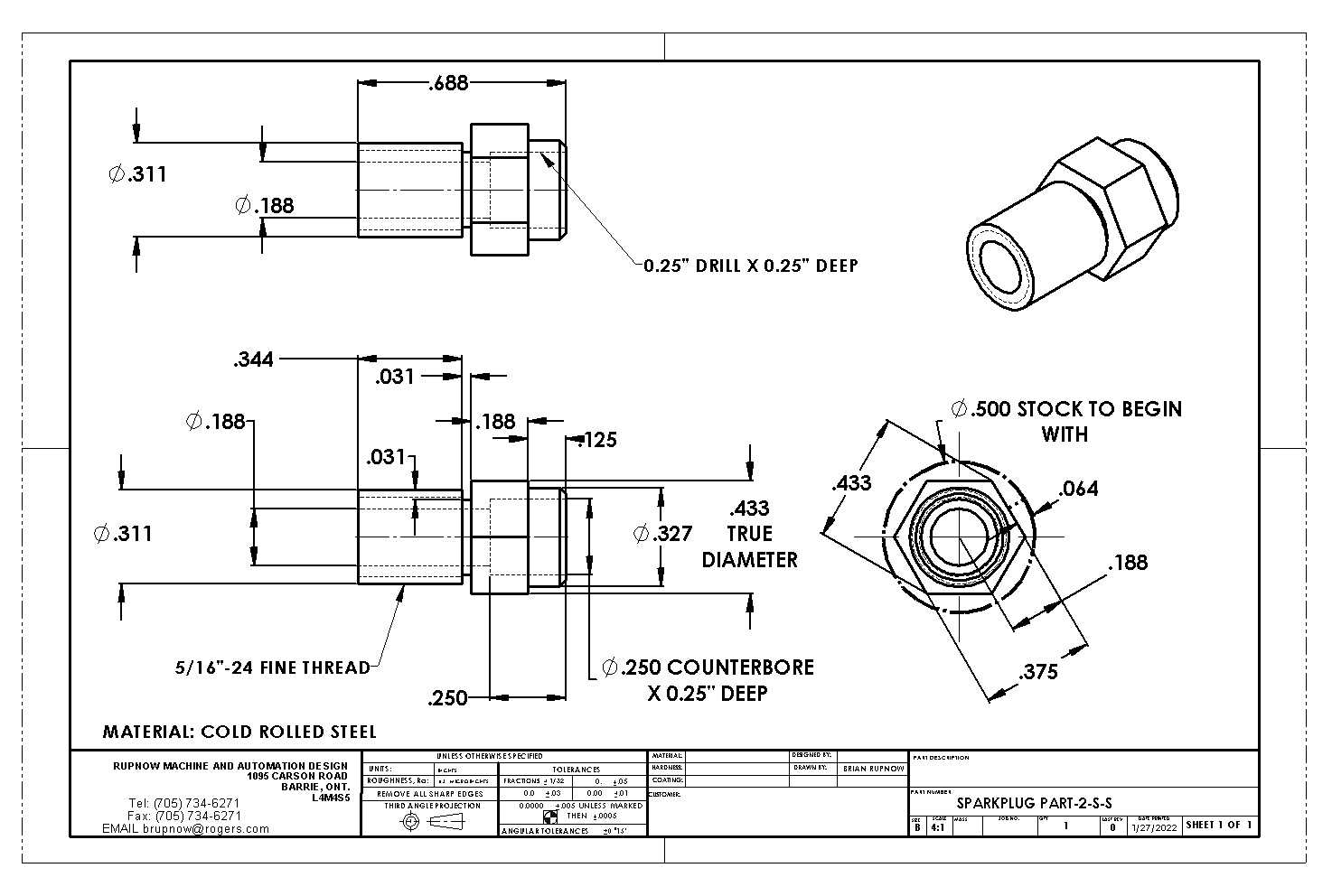
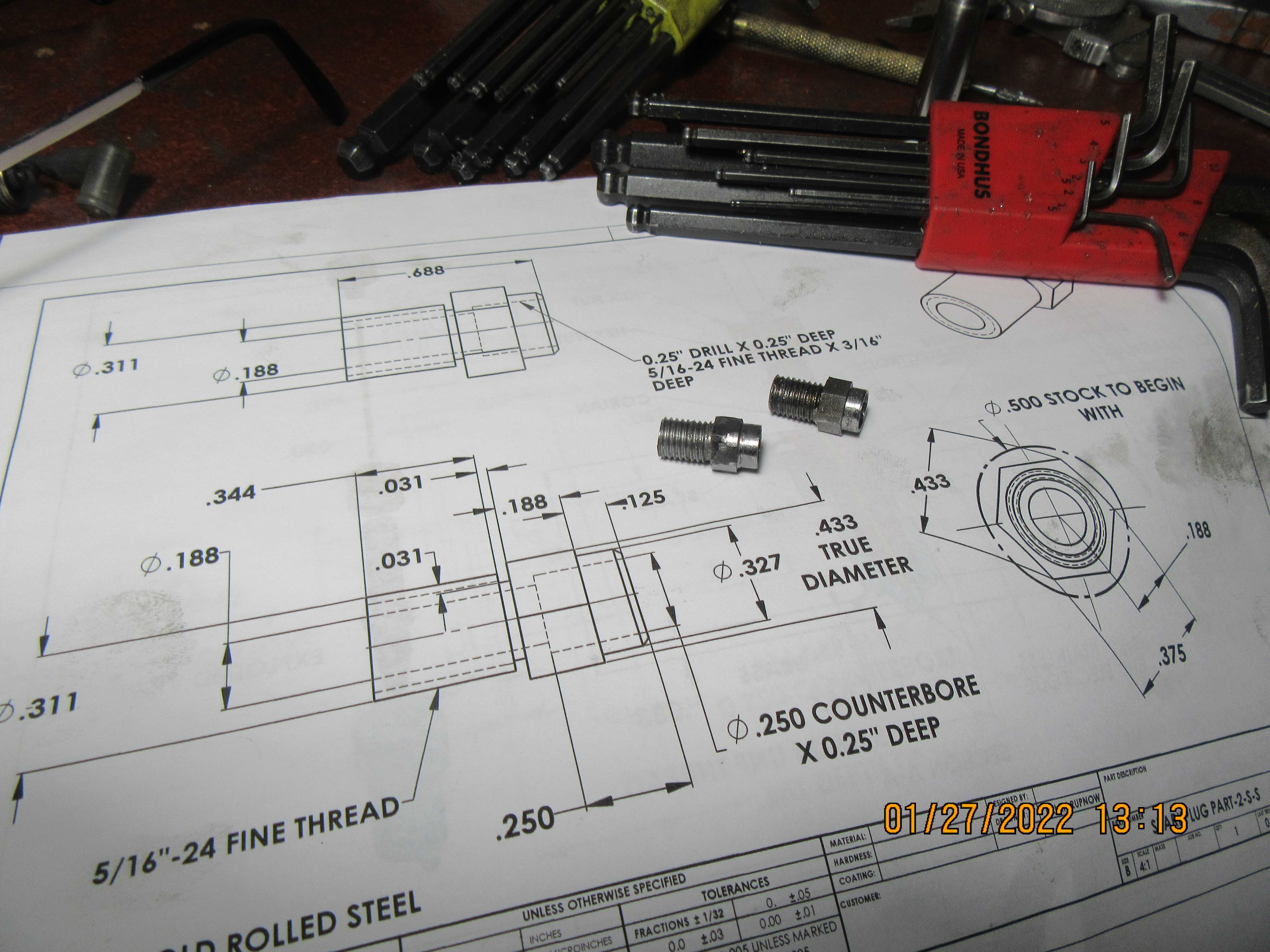


Last edited:
So, now we have all of the parts for a sparkplug except for the Corian. I will turn the piece of Corian later today or tomorrow.
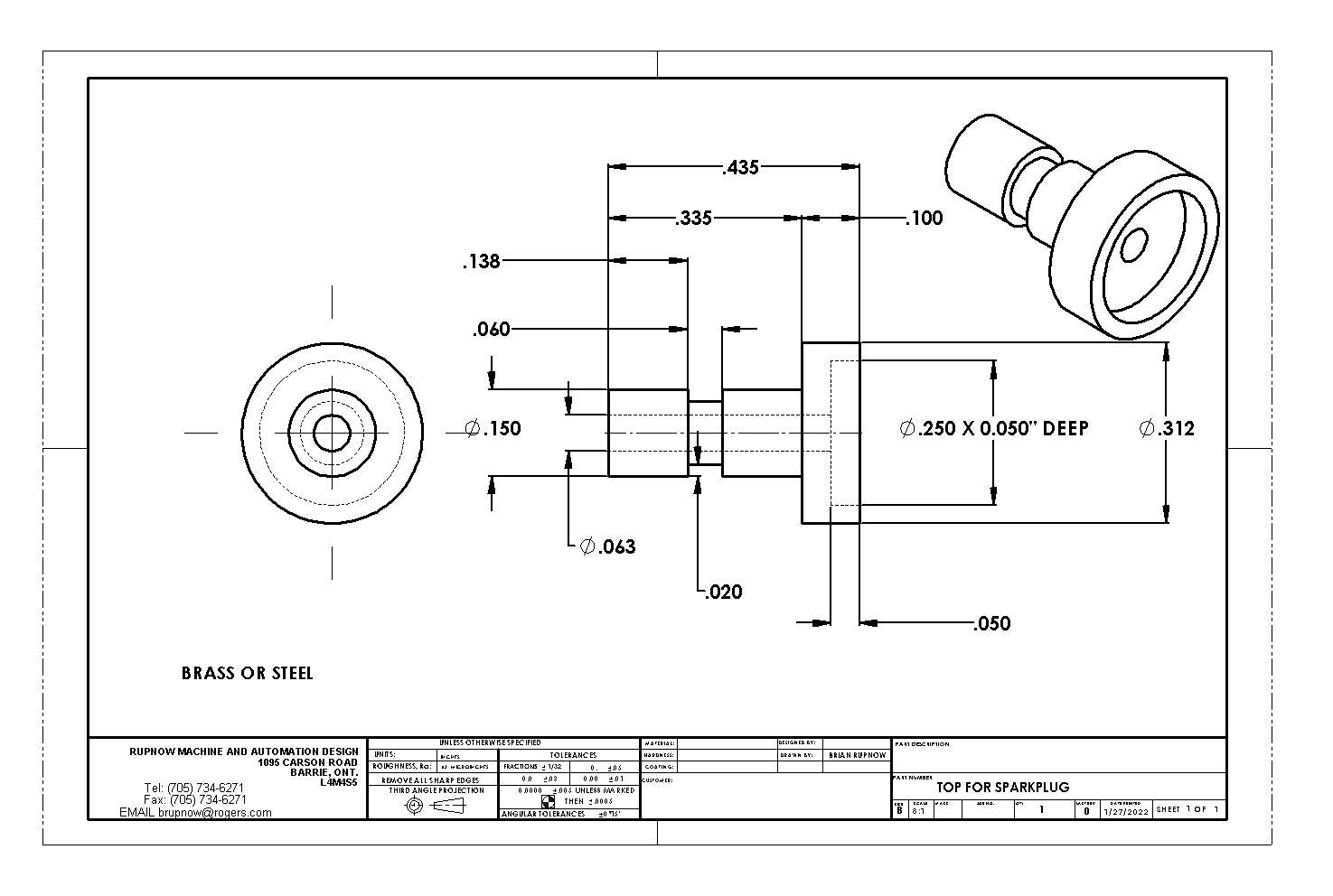
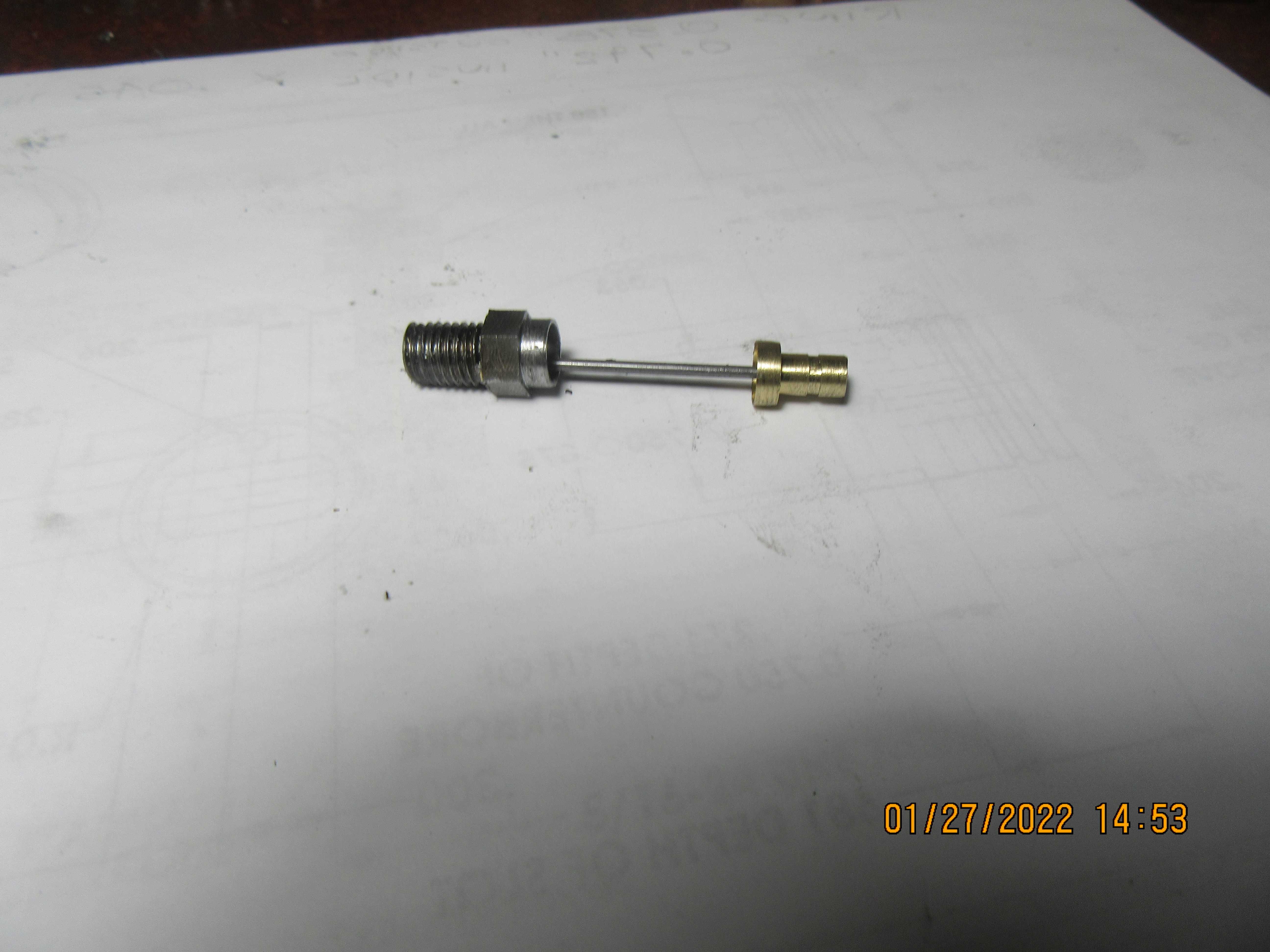


This is where we are eventually going.
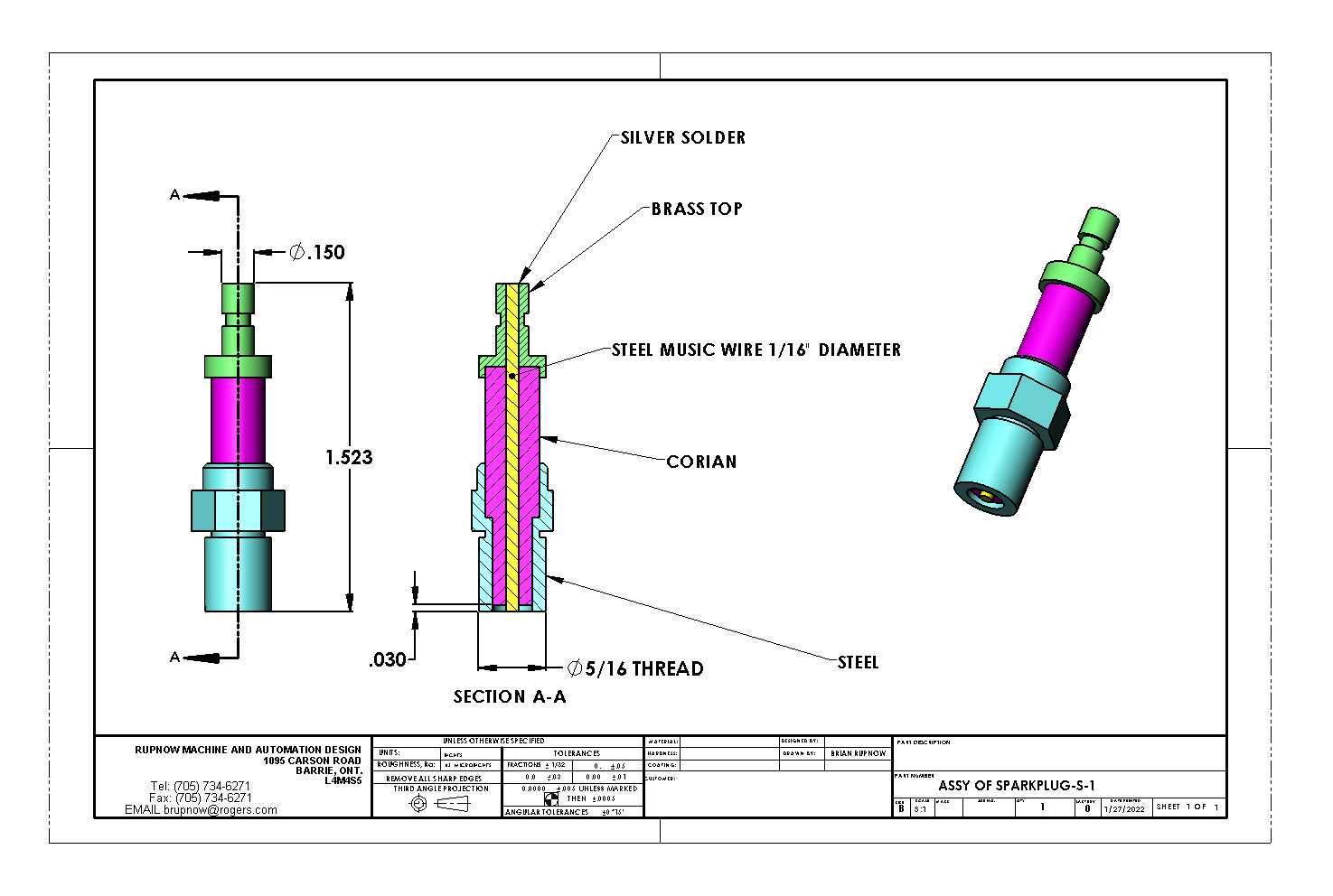

- Joined
- Jul 16, 2007
- Messages
- 3,003
- Reaction score
- 1,065
Brian,
How are you going to secure the insulator into the body of the plug? I make my plugs the same as Steve Huck. Make the cylindrical boss at the top of the plug body with an .008 wall thickness. Turn the insulator with a shoulder. Make a die set to crimp the flange over the shoulder of the plug. I have made 3-4 die sets for different sized plugs and it works great.
gbritnell
How are you going to secure the insulator into the body of the plug? I make my plugs the same as Steve Huck. Make the cylindrical boss at the top of the plug body with an .008 wall thickness. Turn the insulator with a shoulder. Make a die set to crimp the flange over the shoulder of the plug. I have made 3-4 die sets for different sized plugs and it works great.
gbritnell
I watched a guy on YouTube make this plug, and he was just using an epoxy to stick things together. It wasn't J.B.weld, but something like it. Can you tell me more about the die sets you use for crimping? I made up the Corian insulator this afternoon. It machined beautifully. Then I went to drill the 1/16" hole thru the center for the 1/16" music wire, and everything turned to crap. Will try again tomorrow with a brand new 1/16" drill. I remember having this same trouble 12 or 13 years ago when I built the sparkplug for the Kerzel hit and miss.
My experience drilling Corian is that it doesn't like to be pushed. Slow speed, sharp drill, light pressure, and small increment peck drilling will do it. You have to keep it from starting to soften and melt at the drill tip.
Brian - Being new to spark plugs, I find this interesting and could be significantly more cost effective than buying them but I have some questions, if you don't mind. In the sequence of operations for the body, did you first machine the external round dimensions, then cut the threads, followed by milling the hex profile and then finally bore the internal bore and counterbore? Also, for the material used, was it 12L14 or 1018? Do you think fastening the insulator into the body could be done with some of the extreme heat JB Weld, which is supposed to be good for 1000 F degrees? To help secure the insulator would it be necessary to texture the internal of the bore and the OD of the insulator to give the adhesive some purchase (perhaps even thread)? In operation, does the spark jump between the electrode and the body or does there need to be a small bit of something to create a gap similar to an automotive spark plug?
Similar threads
- Replies
- 11
- Views
- 2K
- Replies
- 10
- Views
- 1K
- Replies
- 57
- Views
- 11K







